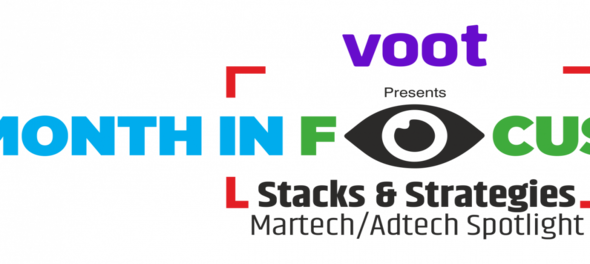
The role of marketing has always been to bridge a connect a brand and its consumers. Over the years data and technology has played a pivotal role in bridging this gap. Many would argue that technology has evolved to become the backbone for driving effective and efficient marketing solutions so much so that digital is set to overtake a more established media like television.
As per an estimate put out by GroupM in February, the total ad spend across media in India is estimated to cross the Rs 1 lakh crore mark in 2022, even as digital is set to overtake TV as the largest advertising medium in 2022, accounting for 45 percent share of the total ad pie.
Storyboard18 spoke to digital experts to understand and identify key adtech trends that will define the India market in 2022 and beyond.
Preparing for Web 3.0
Web 3.0 is the next stage of the web evolution that would make the internet more intelligent or process information with near-human-like intelligence. In Web 3.0, users won’t distinguish between physical and digital experiences. They will expect work, friends, goods, and experiences to be connected virtually.
“This interconnected, live, persistent virtual world with the physical world or reality is also popularly known as the Metaverse. Brands would start leveraging this virtual world as well as components powering the virtual worlds to build Brand experience & assets, drive consumer connect, Associate with the cause, build loyalty, own a moment, or drive real or virtual sales,” says Vishal Jacob, chief digital officer, Wavemaker India.
However, some experts also believe that Metaverse led marketing is still at a nascent stage in India.
“The role of Metaverse in a brand’s larger digital/marketing strategy still needs to be thought through and charted out well before making that big leap. Meta is one of the pillars of the brand experience - when consumers need to experience a brand in the virtual world, not the entirety of the consumer experience,” says Monaz Todywalla, CEO, PHD India.
Return of impersonalisation
One of the trends that agencies have begun to see is the return of impersonalisation – which is a direct result of the personalisation approach not being able to achieve the desired results, says PHD India’s Todywalla.
“By targeting groups or cohorts of consumers with customer segmentation rather than individuals, the advertising tech industry is now finding a mid-way of impersonalising content by taking a step back from hyper-personalisation – turning to strategies and creatives that speak to the common category of potential consumer pools. This largely eliminates the risk of not being able to connect with audiences on the desired level and creates a safe but sustainable model,” she explains.
Identity resolution of consumers
Third-party cookie deprecation is an industry-wide alarm to regain trust and imbibe transparency with the audience. The following are the areas of impact – targeting audiences based on behavioural data, frequency, verification, custom audience, measurement and lastly return on investment (RoI).
“Focus will shift towards identity resolution by leveraging various data sources like panel, contextual, social listening and logged in environmental data. Solutions like unique ID, contextual targeting, hashed email, 1P data, Federated Learning of Cohorts (FLoC) & Artificial Intelligence (AI) are proposed around these areas. The need is not just Customer Data Platforms (CDP) or Data Management Platforms (DMP) but a complete data platform tool that provides effective yet meaningful data,” notes Rohan Chincholi, head - digital services, Havas Media Group India.
“Marketers will have to do a series of test and learn to identify the right solution depending on the use-case as party cookies have e ramifications across targeting, optimisation and measurement,” says Wavemaker’s Jacob.
Data Enrichment
Using first-party data combined with data collected from third-party external sources (like socio-demographic and geographic details) can help boost the visibility of consumer needs, helping brands cater to them effectively across channels.
“Furthermore, it also helps segregate target audiences into specific categories which can then be used for creating more accurate, macro-level strategies. Consumers are more likely to respond well to advertising when it’s done right and data enrichment undoubtedly plays a huge role in augmenting these experiences, adding to the brand’s loyalty value in the long run,” notes Toadywalla.
According to her, the most vital aspect of it all is the ability to foresee the consumer’s purchase intent and more actively identify markers of customer buying behaviour.
“Smart segmentation based on available data sets can make it doubly easier for businesses to reach out to different demographics but with focused precision, thanks to the high-value data obtained from the process,” she adds.
Single marketing lens
Today, data and insights are stored in different dashboards, consumer data is stored in multiple locations. This data is not available across all systems & lacks a central location for critical consumer information.
“There is a pressing need to have a single lens view of brand data that encapsulates all sources to give a holistic picture on cross functional insights (For instance, increase in organic traffic due to branding, impact of branding on branded query searches). That is when connection, context and content parameters seamlessly integrate to deliver meaningful media experiences,” concludes Chincholi.
First Published: Jun 14, 2022 11:11 AM IST
Check out our in-depth Market Coverage, Business News & get real-time Stock Market Updates on CNBC-TV18. Also, Watch our channels CNBC-TV18, CNBC Awaaz and CNBC Bajar Live on-the-go!


Just 8% women candidates contested first two phases of Lok Sabha polls
Apr 29, 2024 12:00 PM
The sexual assault case against Prajwal Revanna — here's what we know so far
Apr 29, 2024 11:36 AM
Repolling underway at one polling booth in Chamarajanagar LS segment in Karnataka
Apr 29, 2024 10:32 AM

